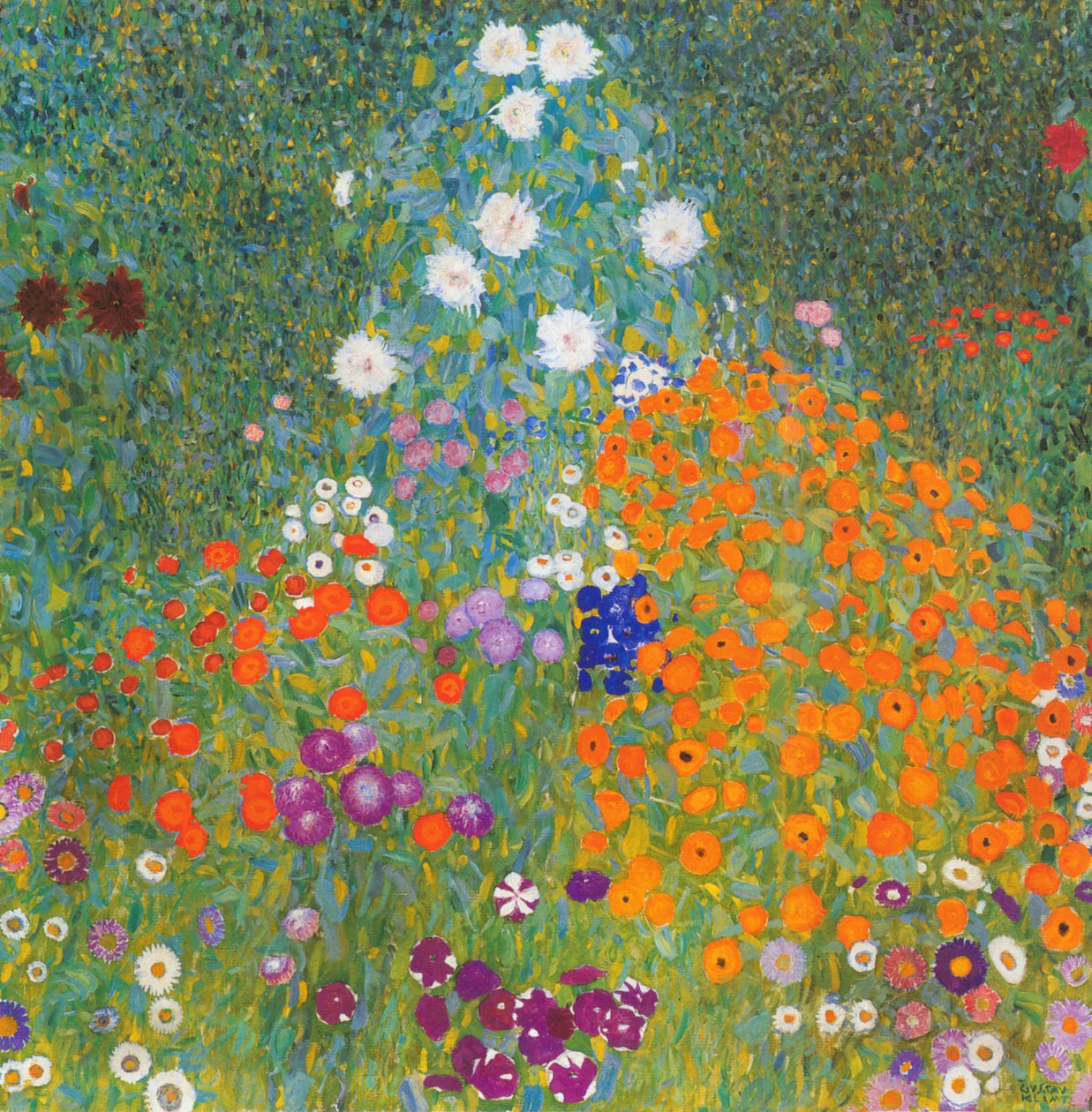1905 · Öl auf Leinwand
· Picture ID: 22735
Art Nouveau
· Flowers · Colorful Pictures · Our favourites
"Doing nothing becomes boring after a short while"; Gustav Klimt's conceptions of life - like most of his paintings - were always full of excitement, color and movement. As in the oil painting Bauerngarten, which he made in 1907 with a series of other well-known garden and landscape paintings, the tension and movement is an important part of his art. He found inspiration in the years of decadentism from 1890 to 1917 on a journey with his family and friends, during which he discovered the rustic and natural garden of the Mayr-Hof in Litzlberg for himself and his art. The Austrian artist was in his creative high phase and at that time began to discover some new techniques, motifs and compositions for himself.
The painting Bauerngarten, with its unique composition of colors and shapes, is one of the artist's best-known and most popular paintings and was auctioned off in 2017 as the third-most expensive painting in European art history. Through complementary colors - as Klimt often gave his works - this picture in the red-green scheme also impresses with a colorful, free and yet harmonious composition, which is enhanced by the triangular arrangement of the floral arrangements on the green meadow. The unusual triangle composition can be seen in some of Klimt's works at this time. It gives a sense of compactness, uniformity and order, reflecting a special understanding of nature through the random, natural arrangement of flowers within this geometric shape. On the one hand, nature seems unadorned, wild and free, on the other hand, it seems so flawless that it is possible for her to create flawless and "perfect". The green background also shows the naturalness and liveliness of the landscape and the natural kingdom through its different green shades and the unplanned arrangement. Different, warm and deep-shining tones of the red and yellow color family become brighter by individual fields of poppies, daisies and roses of different bright colors upwards, until some white radiant blossoms extend like a crown over the other. The blue field of forget-me-not blossoms in the heart of the painting is a break and at the same time an eye-catcher whose luminous color forms a supporting and starting point due to the strong contrast.
By means of impressionistic techniques of pictorial design, which primarily aim at the significance of the motif behind the surface, Klimt depicts the beauty and vitality of the plants, which, though thoughtfully arranged, are nevertheless arbitrary and powerful. According to Klimt's understanding, nature, like humans, is its own power, which escapes all constraints and lives and thrives independently of all external influences. It is not to be seen as a reaction to man or man's view of nature, but as the sole carrier of life and vitality. The square format was also chosen by the artist in order to direct his gaze to certain parts only through the composition in the picture. The square format makes for a balance and makes every corner of the painting seem synonymous. It looks like a section of nature whose characteristics and motives are homosemes independent of each other.
Farm Garden by Gustav Klimt. Available as an art print on canvas, photo paper, watercolor board, uncoated paper or Japanese paper.
flowers ·
grass ·
white ·
orange ·
purple ·
green ·
blue ·
yellow ·
pink
Other color variations of this picture
Other color variations of this picture
|
|
×




.jpg)
.jpg)
.jpg)
.jpg)
.jpg)
.jpg)
.jpg)
.jpg)
.jpg)
.jpg)
.jpg)
.jpg)
.jpg)
.jpg)
.jpg)
.jpg)
.jpg)
 - (MeisterDrucke-103105).jpg)
.jpg)
.jpg)
.jpg)
.jpg)
.jpg)
.jpg)
.jpg)
.jpg)
.jpg)
.jpg)
.jpg)
.jpg)
.jpg)
.jpg)
.jpg)
.jpg)
.jpg)
.jpg)
.jpg)
.jpg)
 - (MeisterDrucke-16196).jpg)
.jpg)
.jpg)
.jpg)
.jpg)
.jpg)
.jpg)
.jpg)
.jpg)
.jpg)
.jpg)
.jpg)
.jpg)
.jpg)
.jpg)
.jpg)
.jpg)
.jpg)
.jpg)
.jpg)
 - (MeisterDrucke-183119).jpg)
.jpg)
.jpg)
.jpg)
.jpg)
.jpg)
.jpg)
.jpg)
.jpg)
.jpg)
.jpg)
.jpg)
.jpg)
.jpg)
.jpg)
.jpg)
_-_(MeisterDrucke-394074).jpg)







